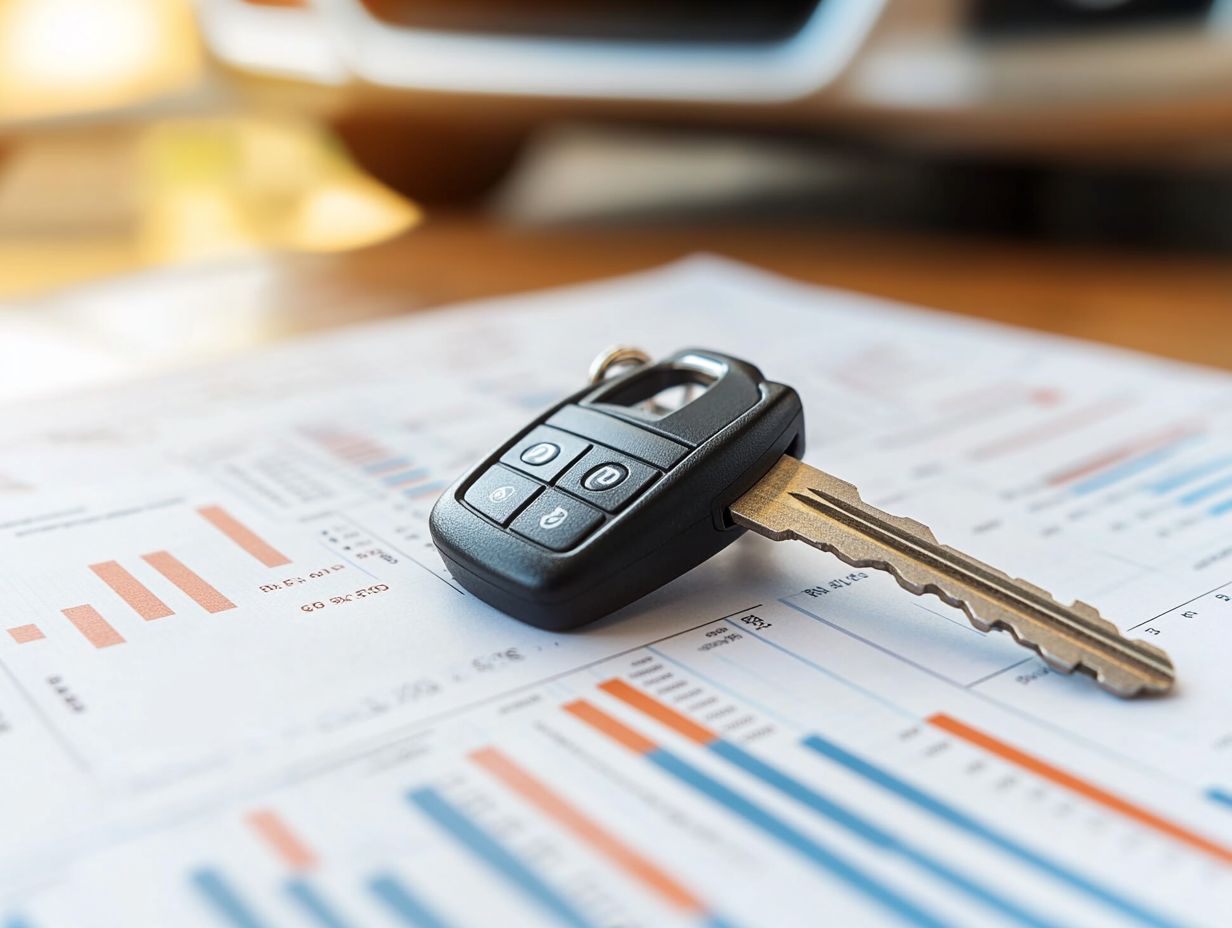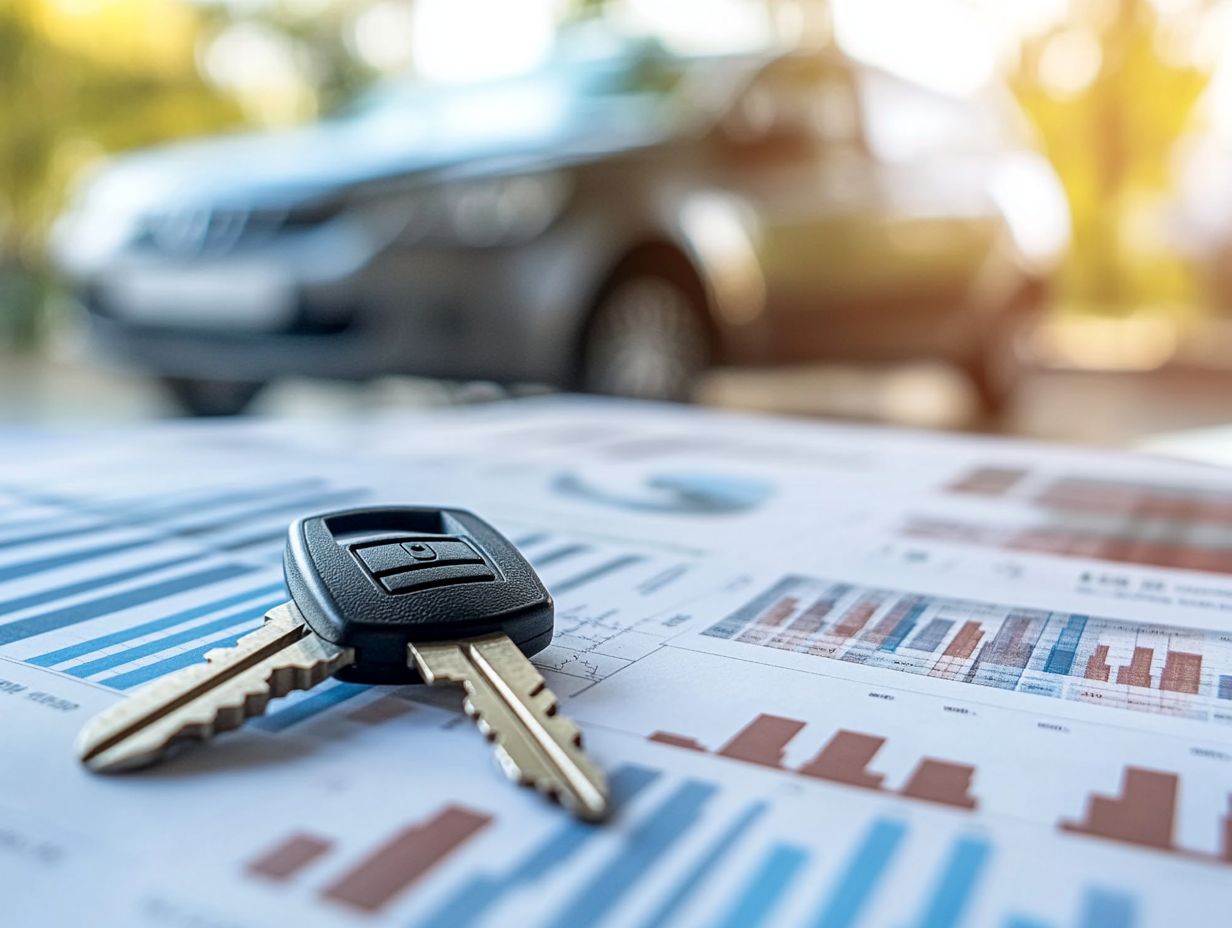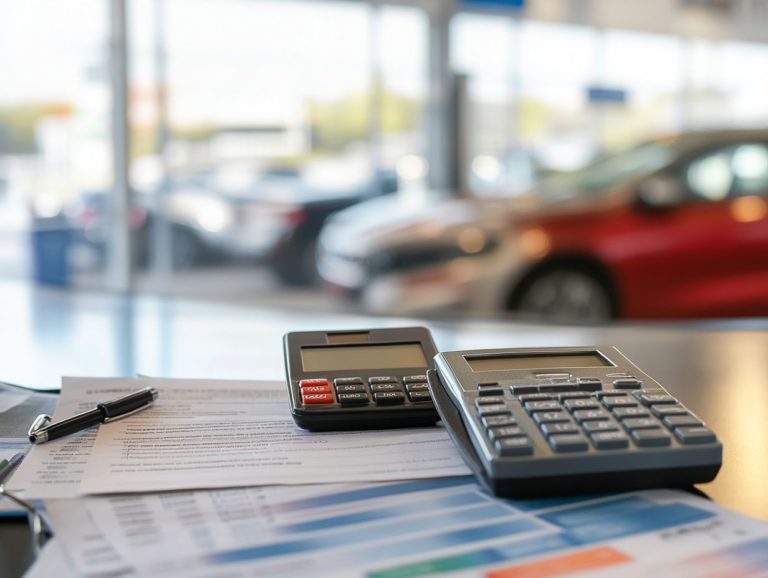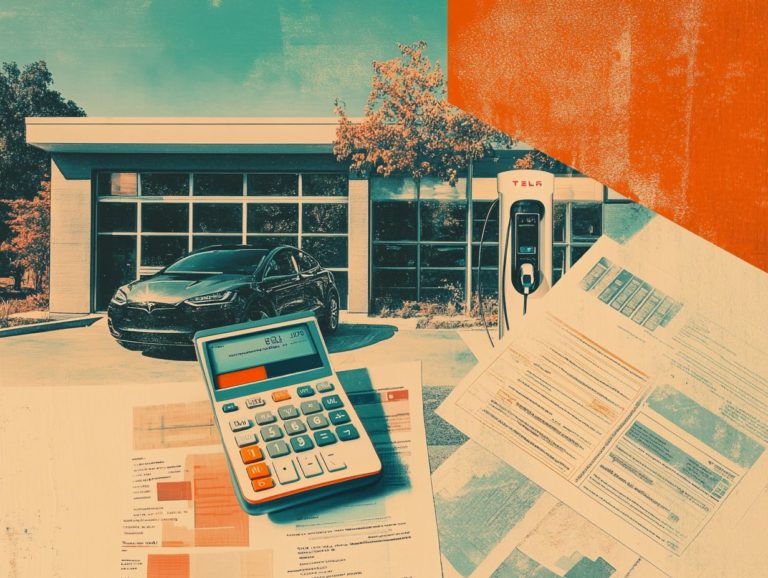Car Financing: What is a Balloon Payment?
When it comes to car financing, balloon payments can be a game-changer or a potential pitfall. Understanding what a balloon payment is and how it operates is crucial for anyone considering this financing option.
This guide delves into the definition of balloon payments, weighing their advantages and disadvantages, and highlighting the key factors you should consider before making a decision.
It also explores alternative financing options to ensure you re well-informed. Whether you re purchasing your first car or looking to upgrade, this information will arm you with the knowledge you need to navigate your choices confidently.
Contents
- Key Takeaways:
- Understanding Balloon Payments in Car Financing
- Pros and Cons of Balloon Payments
- Factors to Consider Before Choosing a Balloon Payment
- Alternatives to Balloon Payments
- Frequently Asked Questions
- What is a balloon payment in car financing?
- How does a balloon payment affect my car financing?
- Can I negotiate a balloon payment with my lender?
- What happens if I can’t make the balloon payment?
- How does a balloon payment differ from a down payment?
- Is a balloon payment the same as a residual value?
Key Takeaways:

- Save money with lower monthly payments.
- Consider your financial situation before choosing.
- Be aware of the larger final payment due at the end.
Understanding Balloon Payments in Car Financing
Grasping the concept of balloon payments in car financing is essential for anyone eager to navigate the world of auto loans. Balloon payments offer a distinct structure, allowing you to make smaller monthly payments during the loan term. This culminates in a considerably larger final payment known as a balloon payment.
This financing option is exciting for those who want to keep their monthly payments low while securing their desired vehicle. Recognizing the risks and factors involved is crucial to ensure you have a comprehensive understanding before making any commitments.
Definition and Explanation
A balloon payment is that substantial final installment you ll encounter at the end of a loan term, following a series of smaller, manageable monthly payments. This structure is commonly found in vehicle financing and auto loans.
By opting for this arrangement, you can enjoy lower monthly installments throughout the loan period, thereby making vehicle ownership more attainable. Your monthly payments are typically calculated based on the interest rate (the extra cost you pay for borrowing money) and the loan amount (the actual amount borrowed), leading to reduced principal payments during the initial term.
However, it’s crucial for you to prepare for the significantly larger balloon payment that becomes due at maturity, as it can sometimes catch you off guard. The interest rate plays a pivotal role in determining the overall cost of the loan; a higher rate often means a steeper final amount owed. This underscores the necessity of fully understanding all terms before committing to an auto balloon loan.
Pros and Cons of Balloon Payments
When contemplating balloon payments, it’s crucial to assess the advantages and disadvantages to see if this payment structure aligns with your financial aspirations and lifestyle. Balloon payments can substantially lower your monthly outlay, appealing to those who prioritize cash flow management. However, it’s important to remember that they come with the potential for a significant final payment, which can become a considerable financial strain if not properly planned for.
Grasping these pros and cons is essential for making an informed choice when navigating the world of vehicle financing. Take the time to explore your financing options your dream car awaits!
Advantages and Disadvantages

The advantages of balloon payments are quite appealing. They offer lower monthly payments that can free up your financial resources for other pressing expenses.
This structure can be beneficial if you re looking to manage your cash flow better. It allows for investments in growth opportunities or coverage of unexpected costs. For example, as a small business owner, you might opt for a balloon payment plan to maintain liquidity while expanding your operations. Just keep in mind the large final payment that awaits, which can be as much as 50% of the loan amount.
If interest rates decide to take a turn, you might find yourself paying significantly more than you originally anticipated when it comes time to refinance the balloon at less-than-favorable terms. Statistics show that nearly 30% of balloon payment borrowers encounter difficulties managing that final lump sum, emphasizing the importance of thoughtful financial planning.
Factors to Consider Before Choosing a Balloon Payment
Before deciding, think carefully about these important factors that could significantly influence your choice. Consider your current financial situation, your future plans for the vehicle, and how your credit score fits into the picture.
Explore options for trade-in or refinancing, and be sure to grasp how car insurance might impact your overall financial commitments. By taking all these elements into account, you can ensure that your choice is not only well-informed but also aligns seamlessly with both your short-term needs and long-term financial aspirations.
Financial Situation and Future Plans
Your financial landscape and future aspirations are pivotal when considering whether a balloon payment is the ideal choice for your auto loan.
A balloon payment can certainly seem appealing if you re looking to lower those monthly installments, but whether it s a fit for you depends largely on your unique financial situation. Key factors like your credit score, which can significantly shape your loan terms, and the stability of your income are crucial in assessing the feasibility of this payment option.
Think about how you plan to use the vehicle down the line and any potential shifts in your financial circumstances like a job change or rising expenses that might occur. By grasping these elements, you can ensure that your decision meets your current needs and aligns with your long-term financial aspirations.
Alternatives to Balloon Payments
When you delve into vehicle financing options, it s crucial to weigh alternatives to balloon payments that can offer you more predictable monthly payments and potentially reduce your overall financial risk.
Traditional loans, for instance, present a steady payment structure throughout the loan term, removing the anxiety of a large final payment. If you initially chose a balloon payment, there may be refinancing options available that allow you to transition to a more manageable payment plan as your financial circumstances change.
Other Payment Options for Car Financing

Other payment options for car financing include traditional loans, leasing, and a variety of flexible financing solutions that can cater to your unique financial situation and preferences.
Traditional loans typically involve a fixed monthly payment over a defined term. This allows you to eventually own the vehicle outright. This option is ideal if you intend to keep your car for an extended period, as it leads to full ownership without the constraints of mileage restrictions.
Conversely, leasing offers you the opportunity to drive a new car every few years with lower monthly payments. It s an attractive choice for those who relish having the latest model. However, leasing often has mileage limits. You could also face fees for wear and tear.
Balloon payments present a different strategy. Here, a substantial amount is due at the end of the financing term. Balloon payments can lower your monthly payments. However, prepare for the large final payment, as it may become a financial burden if not planned accordingly.
Frequently Asked Questions
What is a balloon payment in car financing?
A balloon payment is a large lump sum payment due at the end of a car financing term. It is typically a percentage of the total loan amount and is used to lower the monthly payments during the loan term.
How does a balloon payment affect my car financing?
A balloon payment can greatly impact your car financing. It will result in a higher monthly payment during the loan term. Before committing to the loan, consider if you can afford the balloon payment at the end of the term.
Can I negotiate a balloon payment with my lender?
Yes, it is possible to negotiate a balloon payment with your lender. However, you will need a good credit score and a strong financial profile to negotiate better terms.
What happens if I can’t make the balloon payment?
If you are unable to make the balloon payment at the end of the term, you may have the option to refinance the remaining balance or sell the car to cover the payment. It is important to discuss these options with your lender before the balloon payment is due.
How does a balloon payment differ from a down payment?
A down payment is paid at the beginning of a car financing term, whereas a balloon payment is paid at the end. While a down payment reduces the total loan amount, a balloon payment is typically a large lump sum used to lower the monthly payments during the term.
Is a balloon payment the same as a residual value?
No, a balloon payment and a residual value are not the same. A residual value is the expected value of the car at the end of the financing term, while a balloon payment is the actual amount due at the end of the term.






